Business Maverick, Sci-Tech
Honda CR-Z: Hybrid can be sexy and sporty after all
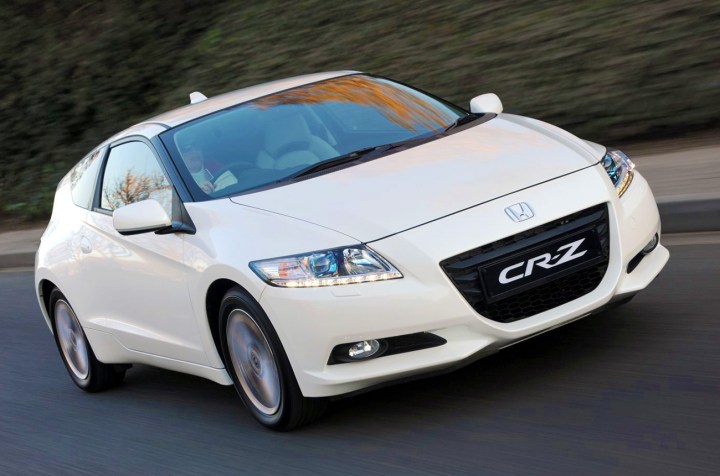
The problem with hybrid cars is that they lack outright sex appeal. Enter the Honda CR-Z: a hybrid that actually looks good. Even better, it feels every bit as keenly honed as it looks. Could this be the sport car of the future? Well, almost.
If we said “hybrid car”, what would the first words be that came to mind? Well, let’s take a guess: fuel economy and eco-friendly would be the most likely responses. But you’d also add terms like boring and sluggish to the list. Hey, it’s hard to get passionate about a Prius just because it happens to combine petrol and electric power – especially when the car itself looks dull and dumpy.
However, maybe not all hybrids are created equal: if the hybrid happens to be Honda CR-Z, about which you might want to consider using words like striking, sexy and fun instead.
So, what makes the CR-Z different from the growing number of hybrids already on offer, both globally and locally? For starters, the Honda is compact, nimble and lightweight, while conventional hybrids are large and heavy, due to the bulk and weight of the battery pack.
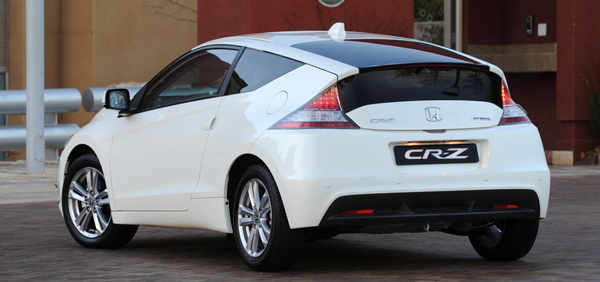
By comparison, the CR-Z uses a compact NiMH battery pack and a slim electric motor that slips in neatly between the engine and the gearbox. That keeps the weight down and allows compact packaging. And because the CR-Z itself is small and wieldy, total vehicle mass has been well contained too.
However, that’s all under the skin. In the metal, no other hybrid can compete with the arresting shape of the CR-Z. It’s not pretty in the normal sense of the word, but it does ooze athletic aggression. And the Honda identity is unmistakable. Unconventional? Yes! Boring? Never.
The CR-Z’s doffs its hat to Honda’s heritage, while also looking to the future. There’s more than a passing resemblance to the CR-X – a lightweight sports car of the 1980s that also had a combination of low fuel consumption and entertaining dynamics in its sights.
At the same time, the CR-Z represents real, hands-on innovation, encased in a shape that expresses individuality, even though the large, hungry front end, with its ravenous aperture, and its oversized tapered headlights, emphatically confirm the Honda identity.
But there’s more: the shallow angle of the roofline, the near horizontal rear screen, the streamlined flanks, the wrap-around glass and the contoured wheel arches have all been shaped for aerodynamic efficiency.
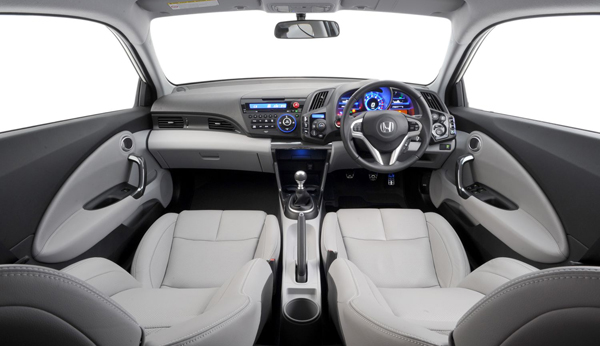
Think about it: with less air resistance, more can be made of the muscle on tap – even from a modest drivetrain. The result is an intriguing combination of form, function and aesthetics. The CR-Z has a shape, a presence that turns heads, and proudly stands out from the automotive crowd.
No surprise then that the hybrid drivetrain is innovative too. It links a 1,5-litre four-cylinder petrol engine to Honda’s Integrated Motor Assist – or IMA. The latter’s electric motor kicks in only when extra urge is needed, and is powered by a nickel metal hydride battery pack.
What’s different here is not the combination of petrol engine and electric motor, but rather just how lightweight and compact the IMA components are. The dual-layer battery pack is not much bigger than a fair-sized briefcase, while the brushless DC motor looks like a thick disc, and simply slots in between engine and gearbox. Simple, elegant – and effective.
However, because the battery pack is so compact, it can only offer limited assistance. Driven with gusto on sustained uphill sections will soon empty the batteries, leaving only the 1,5-litre petrol unit to propel the CR-Z.
However, the good news is that the same motor also generates power under braking and deceleration, which is funnelled back to the battery. Even the slightest trailing throttle will initiate charging, while braking hard gives the battery a decent dose of regenerative juice.

The IMA system can boost drivetrain performance to levels more akin to those of an 1,800cc engine, rather than the CR-Z’s 1,5-litre heart. The extra urge is instantly on tap and really adds to the Honda’s pep and responses.
The combined power output of engine and IMA comes to 91kW and 174Nm, which sounds no more than adequate, but is more than zesty enough in practice. Considering the CR-Z’s 1,140kg kerb mass, the power-to-weight ratio comes to almost 80kW/ton, which isn’t too shabby.
How that urge is applied is another CR-Z party trick. You get to choose between three driving modes: normal, sport and econ. Each mode tailors parameters such as steering, throttle response and the IMA’s power boost to prioritise performance, economy or an ideal balance of both.
Normal works best for most conditions, while econ introduces some sluggishness in the interests of economy, and is best deployed when stuck in slow zones. But the sport mode is the most fun and the one that enthusiasts will want to select almost by default.
The gearbox is a six-speed manual – a first for a hybrid car – and features one of those short, sharp shift actions that only real sports machines can muster. It transfers the drivetrain’s output to the front wheels, but as we’re about to discover, the Honda doesn’t feel like a front-wheel drive car at all.
Before firing up the Honda, it’s advisable to spend a bit of time exploring the cabin. Because the CR-Z is a hybrid with a choice of driving modes, and because fuel efficiency plays such a key role, the way car and driver interface is particularly important.
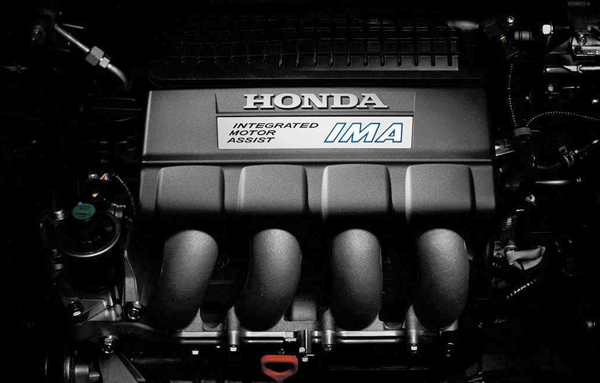
Like the rest of the CR-Z, innovation is the central theme. The cockpit has been conceptualised to keep the driver informed about every aspect of the drivetrain’s performance, while also delivering on the comfort and luxury fronts.
The ergonomics and the driving position are terrific, thanks to sculpted front bucket seats and the rake and reach-adjustable steering wheel. However, it’s the instruments that take centre stage: their 3D presentation and multi-coloured illumination are both different and effective.
Besides the usual array of dials, the CR-Z has an eco monitor that shows how much energy has been generated, preserved or squandered. It records both immediate and long-term trends and rewards the light-foot brigade with symbolic trees.
There’s also a display with cyclable screens that offer a variety of status reports and graphical representations. Bar graphs show IMA assistance and energy regeneration, as well as battery status. By monitoring the eco and battery bar graphs, drivers get to make the most of IMA when needed, while also reducing fuel consumption.
The equipment list is comprehensive, and includes everything from decent audio and climate control to remote central locking, leather trim, electric windows and mirrors and cruise control.
Accommodation is spacious enough up front, but severely cramped at the rear. In fact, for all intents and purposes, this is a two-seater – the rear bench seat is best folded flat and used as extra luggage space, as the boot is tiny, too. There is a spare wheel, but it’s only a space saver.
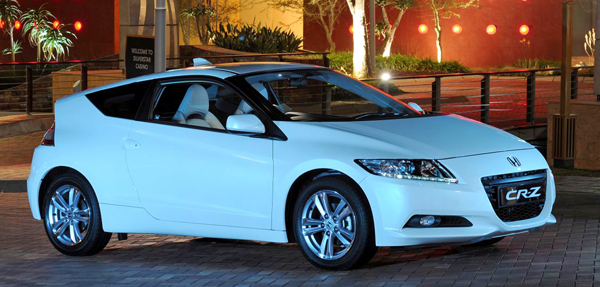
Even so, such criticisms fade into obscurity as soon as you start driving the CR-Z. From the outset, it feels like a sports car: wieldy and responsive, with great turn-in and a chassis that’s lively without becoming harsh. With full IMA boost, there’s ample power, too.
While it’s on song, IMA adds a turbine-like, linear power delivery to the petrol engine’s muscle, ensuring that the little Honda gets a real spring in its step.
But even without that boost, the 1,5-litre engine delivers enough zip. In typical i-VTEC Honda fashion, it enjoys being revved, to the extent that the intervention of the rev limiter at 6,500rpm comes as something of a surprise.
The chassis matches the CR-Z’s sporty aspirations to a tee. The suspension set-up is taut and controlled, but still pliant enough to allow less than ideal surfaces to be negotiated without the loss of filings or the need for a kidney belt.
The low-slung driving position and a panoramic view through the curved, raked windscreen adds to the appeal of the driving experience. And then there’s the steering, which is electrically assisted, but still allows good, direct feedback – even if the action is a little remote.
The Honda will slice through tight corners with apex-perfect precision, while showing little, if any, propensity for body roll. The car’s attitude remains flat and neutral, and there’s no understeer to speak of.
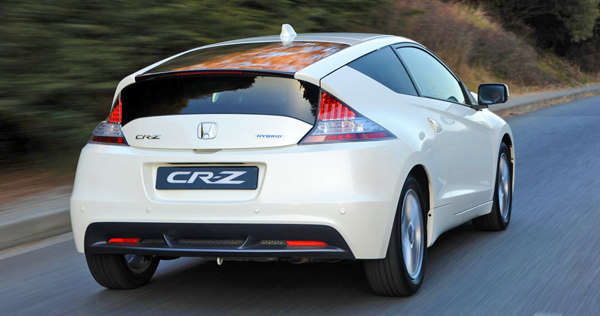
So composed , so confidence-inspiring is the chassis that the CR-Z encourages one to carry more and more speed into corners. In fast sweeps, lateral grip is truly impressive, with an uncanny, grin-inducing ability to stick to the chosen line.
All of these factors contribute to sustaining the CR-Z’s sporty, enjoyable character. It’s a car that oozes energy from every pore, and seems to always make the most of what’s on offer.
Performance is swift enough, if not quite in the tar-burning category. The dash from standstill to 100km/h takes 10 seconds, which is brisk at best. And of course, the 200km/h top speed is of purely academic interest, but always feels entirely feasible.
Besides, being a hybrid, aspects such as fuel consumption are of particular interest. The factory statistics claim an impressive 5,0 litres/100km for the combined cycle. However, driven with some gusto to match the CR-Z’s athletic character, expect a real-world figure more likely to be around 7 litres/100km.
Don’t expect the CR-Z to be a full-blooded sports car in the tradition of the now legendary S2000 roadster. Instead, this Honda is a sporty, innovative and highly entertaining coupé – and it rewards the driver on many different levels.
That this Honda is also a pointer to what cars of the near future could be like, adds to its significance. Put it this way: If all future hybrids are as much fun to drive as the CR-Z, that future looks bright indeed.
Deon Schoeman
[email protected]
VITAL STATS
Honda CR-Z
Engine
Hybrid: 1 497 cc four-cylinder petrol with IMA
Gearbox
Six-speed manual
Power
91 kW at 6 100 rpm
Torque
174 Nm @ 1 500 rpm
0-100 km/h
10,0 sec
Top speed
200 km/h
Fuel consumption
5,0 litres/100 km (combined)
Carbone dioxide emissions
117 g/km
Retail price
R299 900



















 Become an Insider
Become an Insider